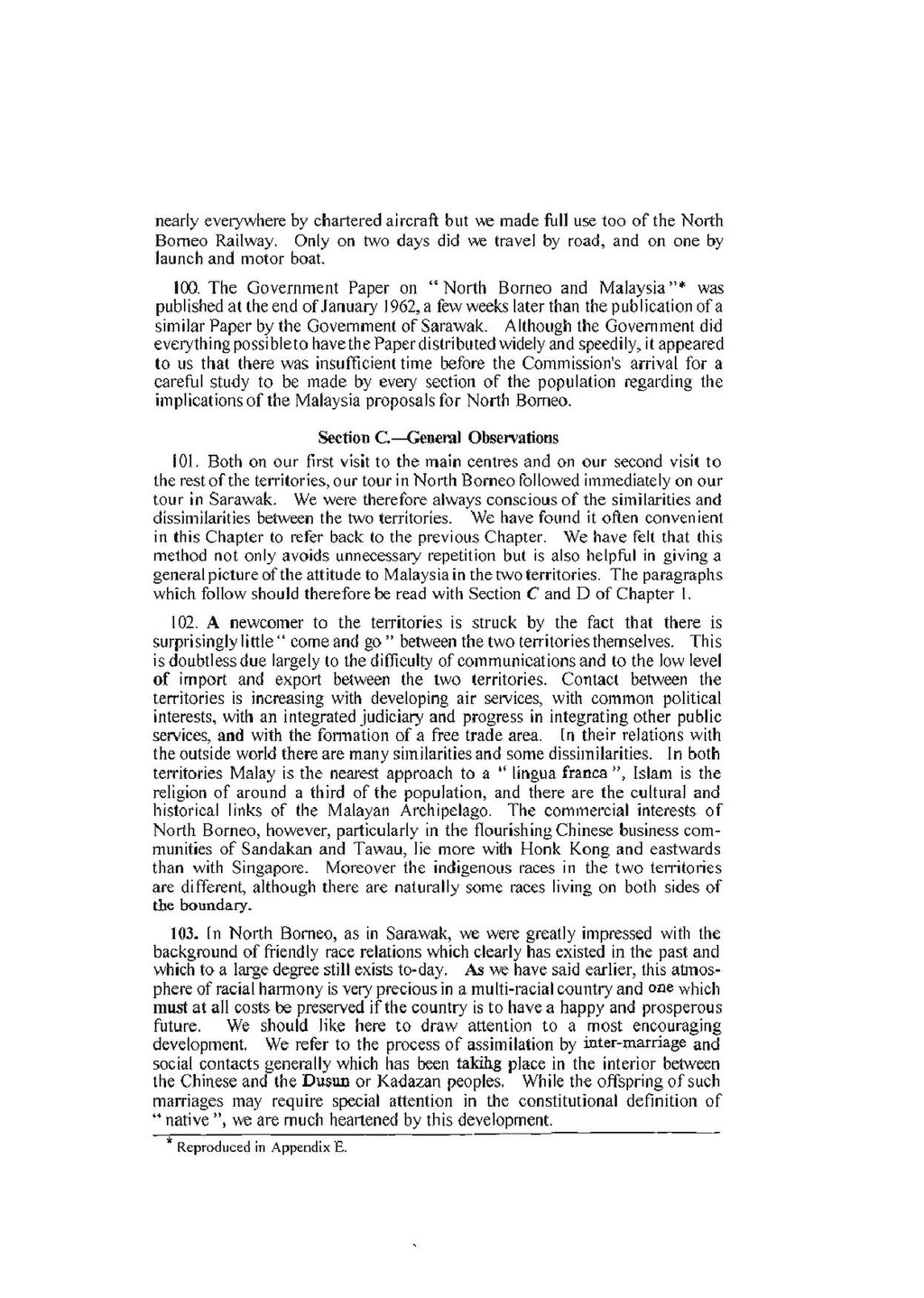nearly everywhere by chartered aircraft but we made full use too of the North Borneo Railway. Only on two days did we travel by road, and on one by launch and motor boat.
100. The Government Paper on "North Borneo and Malaysia"[1] was published at the end of January 1962, a few weeks later than the publication of a similar Paper by the Government of Sarawak. Although the Government did everything possible to have the Paper distributed widely and speedily, it appeared to us that there was insufficient time before the Commission's arrival for a careful study to be made by every section of the population regarding the implications of the Malaysia proposals for North Borneo.
Section C.—General Observations
101. Both on our first visit to the main centres and on our second visit to the rest of the territories, our tour in North Borneo followed immediately on our tour in Sarawak. We were therefore always conscious of the similarities and dissimilarities between the two territories. We have found it often convenient in this Chapter to refer back to the previous Chapter. We have felt that this method not only avoids unnecessary repetition but is also helpful in giving a general picture of the attitude to Malaysia in the two territories. The paragraphs which follow should therefore be read with Section C and D of Chapter 1.
102. A newcomer to the territories is struck by the fact that there is surprisingly little "come and go" between the two territories themselves. This is doubtless due largely to the difficulty of communications and to the low level of import and export between the two territories. Contact between the territories is increasing with developing air services, with common political interests, with an integrated judiciary and progress in integrating other public services, and with the formation of a free trade area. In their relations with the outside world there are many similarities and some dissimilarities. In both territories Malay is the nearest approach to a "lingua franca", Islam is the religion of around a third of the population, and there are the cultural and historical links of the Malayan Archipelago. The commercial interests of North Borneo, however, particularly in the flourishing Chinese business communities of Sandakan and Tawau, lie more with Honk Kong and eastwards than with Singapore. Moreover, the indigenous races in the two territories are different, although there are naturally some races living on both sides of the boundary.
103. In North Borneo, as in Sarawak, we were greatly impressed with the background of friendly race relations which clearly has existed in the past and which to a large degree still exists to-day. As we have said earlier, this atmosphere of racial harmony is very precious in a multi-racial country and one which must at all costs be preserved if the country is to have a happy and prosperous future. We should like here to draw attention to a most encouraging development. We refer to the process of assimilation by inter-marriage and social contacts generally which has been taking place in the interior between the Chinese and the Dusun or Kadazan peoples. While the offspring of such marriages may require special attention in the constitutional definition of "native", we are much heartened by this development.
- ↑ Reproduced in Appendix E.
